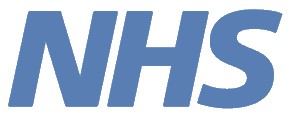Changes to the GP Patient Survey
2018 survey
1. Questionnaire changes
The GPPS questionnaire was redeveloped ahead of the 2018 survey to reflect changes in the delivery of general practice services. These changes were extensive. The questionnaire redevelopment process is fully documented in a report available on the GPPS website, along with the revised questionnaire, found on the survey and reports page.
Because these changes impacted not just individual questions but the questions around them ('context effects'), and due to the inclusion of 16-17 year olds, trends were not presented for 2018, even where question wording remained similar. For more information on the impact of these changes, please refer to the 2018 technical annex.
2. Methodology changes
As part of a commitment to continually review the survey with the intention of improving survey quality and providing value for money, during January to March 2017 fieldwork, Ipsos MORI and NHS England trialled a number of experiments on a sub-sample of GPPS respondents. This tested the impact of using the following within the survey mailout strategy: a second postcard reminder, a pressure-sealed document (in place of the postcard), amending the materials to include a nudge to web (QR code and clear invitation to go online) alongside a lighter touch nudge to web (survey number and password placed at the top of the letter).
The findings from these experiments led to the adoption of the lighter touch nudge to web approach for fieldwork in 2018. This increased the proportion responding online while returning a response rate in line with the main survey. Further, analysis of the weighted results showed that there were no changes in the weighted profile of participants as a result of these changes.
The revised survey materials are available on the website, on the surveys and reports page.
For the first time the sample was extended to include 16 and 17 year olds to make the survey more inclusive. As a result of this, and changes to the questionnaire, no trends are being reported this year, even where question wording remains similar.
Further details of the 2018 methodology and the impact of these changes can be found in the 2018 technical annex.
Some of our reporting outputs - such as the national summary report - this year present the results and summary results for the survey. In many cases these results exclude the non-specific response options (e.g. ‘Don’t know’, ‘Haven’t tried’, ‘Can’t say’ / ‘Doesn’t Apply’) to provide a more accurate reflection of how those using a service evaluate it. Where this is the case, these have been highlighted. For more detail see the presentation of results document on the main surveys and reports page.
3. Organisational changes
Practice level CCG changes
Garstang Medical Practice (formerly Windsor Surgery, practice code P81006) changed its CCG parent from NHS Morecambe Bay CCG (01K) to NHS Fylde and Wyre CCG (02M).
Great Eccleston HLTH CTR (P81059) changed its CCG parent from NHS Greater Preston CCG (01E) to NHSE Fylde and Wyre CCG (02M).
Thornbury Medical Practice (B83005) changed its CCG parent from NHS Bradford Districts CCG (02R) to NHS Bradford City CCG (02W).
Bellevue Medical Centre (M85124) changed its CCG parent from NHS Birmingham South and Central CCG (04X) to NHS Sandwell and West Birmingham CCG (05L).
CCG level changes
As of 1 April 2018, the following CCG mergers occurred:
-
NHS Birmingham CrossCity CCG (13P), NHS Birmingham South and Central CCG (04X), NHS Sandwell and West Birmingham CCG (05L) and NHS Solihull CCG (05P) merged to form NHS Birmingham and Solihull CCG (15E).
-
NHS Leeds North CCG (02V), NHS Leeds South and East CCG (03G) and NHS Leeds West CCG (03C) merged to form NHS Leeds CCG (15F).
-
NHS Bristol CCG (11H), NHS North Somerset CCG (11T) and NHS South Gloucestershire CCG (12A) merged to form NHS Bristol, North Somerset and South Gloucestershire CCG (15C).
-
NHS Aylesbury Vale CCG (10Y) and NHS Chiltern CCG (10H) merged to form NHS Buckinghamshire CCG (14Y).
-
NHS Bracknell and Ascot CCG (10G), NHS Slough CCG (10T) and NHS Windsor, Ascot and Maidenhead CCG (11C) merged to form NHS East Berkshire CCG (15D).
-
NHS Newbury and District CCG (10M), NHS North & West Reading CCG (10N), NHS South Reading CCG (10W) and NHS Wokingham CCG (11D) merged to form NHS Berkshire West CCG (15A).


